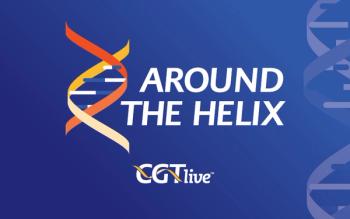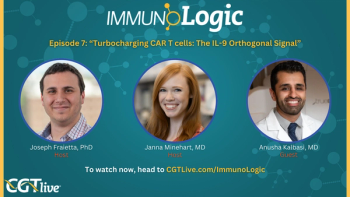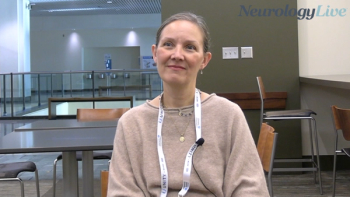
FDA Supports Pivotal Trial Expansion of ATSN-201 Gene Therapy for XLRS
Atsena Therapeutics will advance ATSN-201 into a pivotal phase 1/2/3 trial following FDA agreement on study design and endpoints.
Atsena Therapeutics has announced alignment with the FDA on the regulatory path for ATSN-201, an investigational gene therapy for X-linked retinoschisis (XLRS).1 The agreement enables the company’s ongoing phase 1/2 LIGHTHOUSE trial (NCT05878860) to expand into a phase 1/2/3 study, serving as a pivotal trial to support a future biologics license application (BLA).
The expanded trial design gets rid of the need for a separate phase 3 study and is expected to accelerate potential approval by at least 1.5 years. Enrollment is expected to begin in the first quarter of 2026 and BLA submission is anticipated in early 2028.
“This regulatory milestone marks another significant step toward delivering a potentially first- and best-in-class gene therapy for patients living with XLRS,” Patrick Ritschel, MBA, chief executive officer, Atsena Therapeutics said in a statement.1 “The agency’s agreement will expedite the clinical development of ATSN-201. If approved, this would be the first available treatment for XLRS, offering hope to patients and families affected by this inherited retinal disease.”
The FDA’s decision follows a regenerative medicine advanced therapy (RMAT) meeting and confirms the agency’s agreement with the study’s design, endpoints, and patient population. The pivotal cohort will include approximately 30 patients, randomly assigned 1:1, between treatment and control groups. Outcomes that will be evaluated include visual acuity, microperimetry, and macular structural changes, with a data readout expected in the second half of 2027.
XLRS is a monogenic, X-linked retinal condition caused by mutations in the RS1 gene, leading to schisis of the retinal layers. The disease mainly affects male patients and is usually diagnosed in childhood. It causes decline in vision that cannot be corrected with glasses and may progress to blindness. Approximately 30,000 people in the United States and European Union are affected.
ATSN-201 is a one-time gene therapy that uses Atsena’s AAV.SPR vector, which spreads laterally from the subretinal injection site. This enables efficient transduction of central retina photoreceptors while minimizing the surgical risks associated with foveal detachment.
Some earlier intravitreal gene therapy trials in XLRS (NCT02317887, NCT02416622) demonstrated safety, but lacked significant visual or anatomical improvements, possibly because of limited transduction of central photoreceptors. ATSN-201 uses subretinal delivery with a laterally spreading AAV. SPR vector to directly reach the central retina, where damage from XLRS is most severe. This method helps bypass barriers like the internal limiting membrane, which limited the effectiveness of earlier intravitreal approaches. By spreading beyond the injection site and avoiding foveal detachment, ATSN-201 is designed to deliver the gene more efficiently to the target cells, potentially leading to better structural repair and vision improvement than has been seen before.2
“Data from the ongoing trial show that subretinal delivery of ATSN-201 has been well tolerated to date, including in patients with severe schisis cavities,” Kenji Fujita, MD, chief medical officer, Atsena Therapeutics, added to the statement.1 “We’ve observed encouraging improvements in both retinal structure and visual function, which speaks to the therapeutic potential of our approach.”
ATSN-201 has been granted RMAT, fast track, rare pediatric disease, and orphan drug designations by the FDA. It is the first gene therapy for XLRS to demonstrate both efficacy and safety in a phase 1/2 trial. The therapy has shown a favorable safety profile up to 1 year post treatment, with no serious adverse events reported.The LIGHTHOUSE trial is currently enrolling male patients aged 6 years and older with genetically confirmed XLRS.
REFERENCES
1. Atsena therapeutics granted U.S. FDA fast track designation for ATSN-201 gene therapy to treat x-linked retinoschisis.Atsena Therapeutics. Published March 12, 2025. Accessed July 16, 2025. https://atsenatx.com/press-release/atsena-therapeutics-granted-us-fda-fast-track-designation-for-atsn-201-gene-therapy-to-treat-x-linked-retinoschisis/
2. Cukras C, Wiley HE, Jeffrey BG, et al. Retinal AAV8-RS1 gene therapy for X-linked retinoschisis: initial findings from a phase I/IIa trial by intravitreal delivery. Molecular Therapy. 2018;26(9):2282-2294. doi:https://doi.org/10.1016/j.ymthe.2018.05.025
Newsletter
Stay at the forefront of cutting-edge science with CGT—your direct line to expert insights, breakthrough data, and real-time coverage of the latest advancements in cell and gene therapy.











































